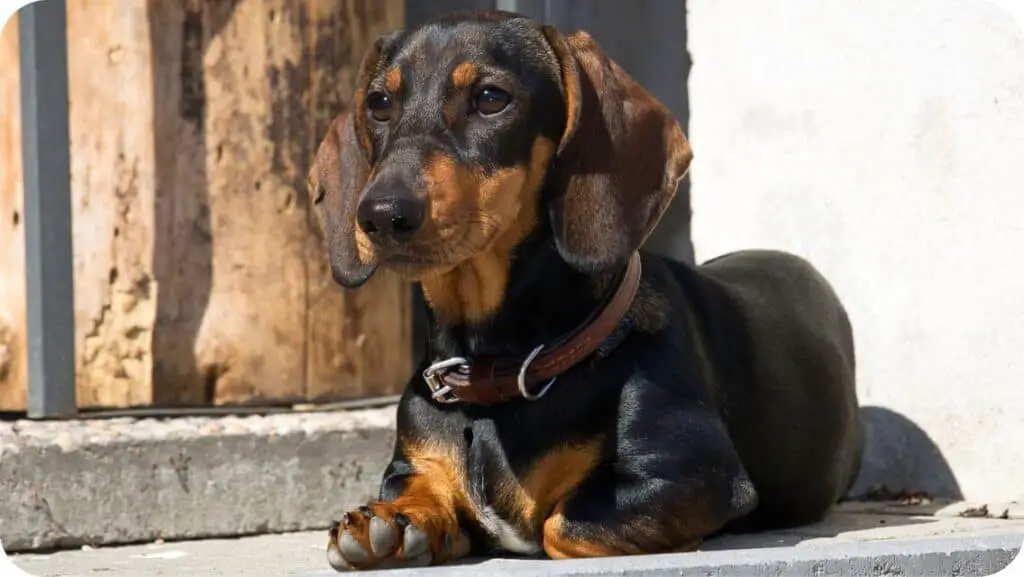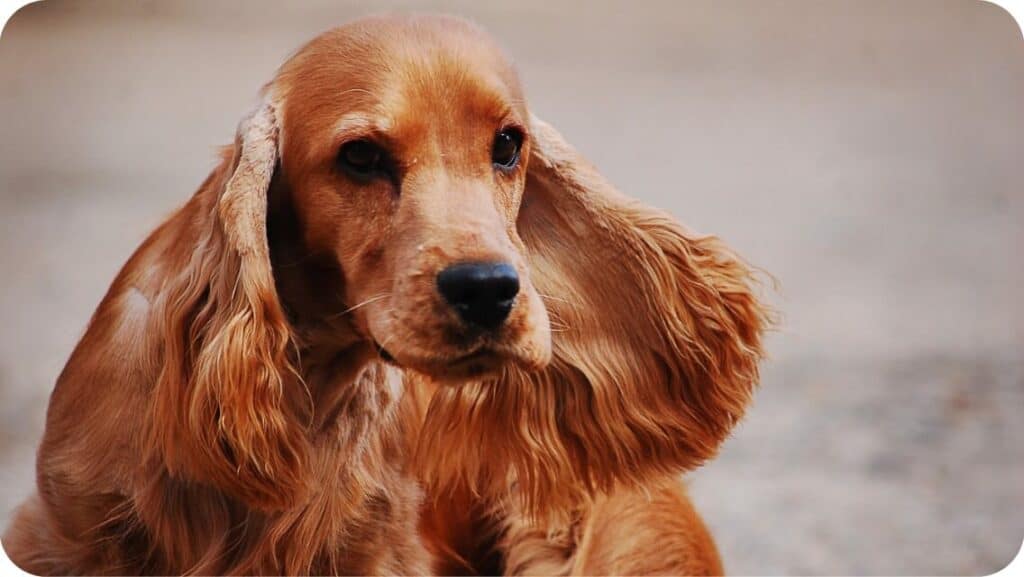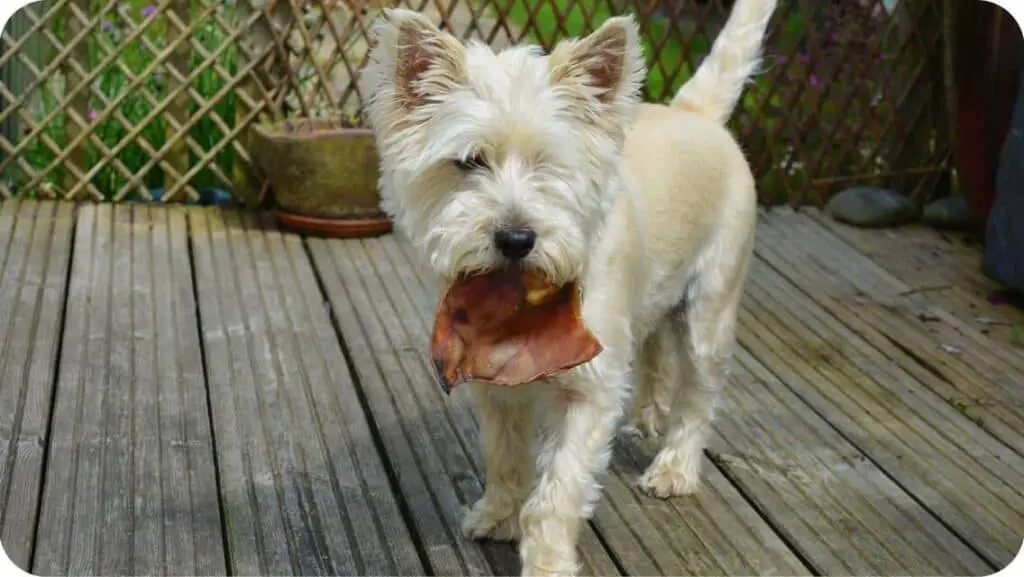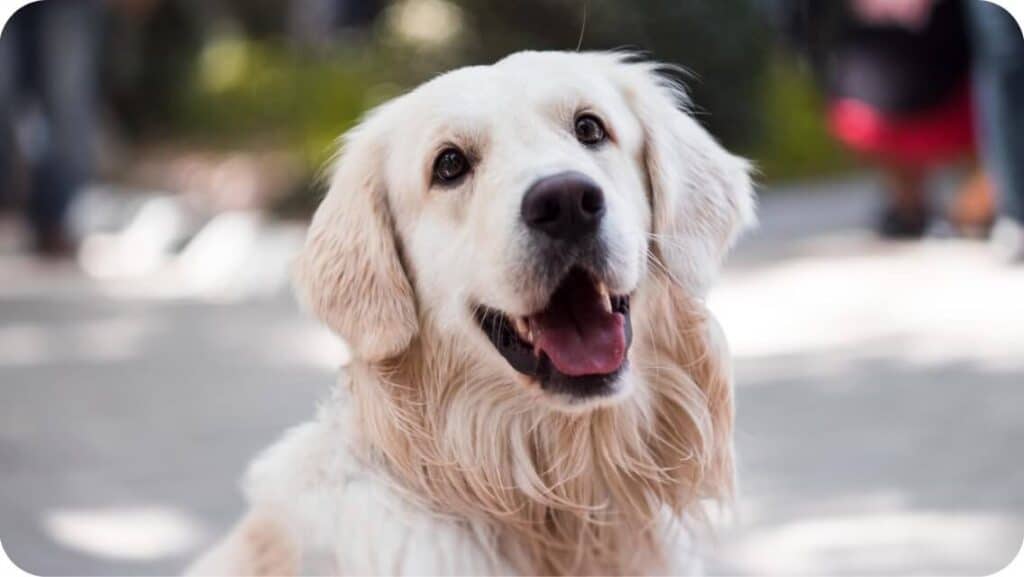I once lived with four chihuahuas and a terrier and I could tell them apart in the dark. Patsy had long, thick fur.
The rest were short-haired but Pepper had short but thick fur, Blondie had soft fur, Pablo had smooth fur and Ren was tiny with very short, fine fur.
Fur texture can vary not only between breeds but between individual dogs. Dog’s fur, like a person’s hair, has its own unique texture.
It can be curly, straight, soft coarse, or like the eponymous song from Hair, ‘ Streaming, flaxen, waxen, knotted, polka-dotted Well, a dog is more likely to have naturally polka-dotted hair than a person is.
Like people, the hair on a dog is partially the result of genetics. Also like people, being unhealthy can change the natural texture of hair.
You want to get away from ‘Ratty, matty, oily, greasy’ and closer to ‘fleecy, shining, gleaming. A home for fleas? No!
Popular Read: Heat Diapers For Dogs

Some Signs That Your Dog’s Fur is Healthy
Even on short-haired or wire-haired breeds, the fur should be soft and smooth. The coat should be shiny but not greasy or oily. The odor should not be too strong.
Hair that is excessively dry, brittle, or loose is not healthy. Unusual bald patches, bad smells, and a dusty, unpleasant appearance mean something is wrong.
The Texture of Your Dog’s Fur
There are six different varieties of dog fur textures. Each one has its own type of maintenance to help Fido stay healthy.
- Smooth and Short Coated Greyhounds and labs have this fur type. They can easily be groomed with an occasional once over with a bristle brush.
- Medium Coated Collies and German shepherds have fur of this kind. The hairs are at least an inch long. They need a brushing every other day to prevent it from matting up.
- Long Coated This is the kind of fur Yorkies and Pekes naturally have. It’s pretty but requires a lot of upkeep. They require daily grooming. Tangles are uncomfortable as well as unattractive.
- Wire Coated Schnauzers and many terrier breeds are wire coated. The outer layer is a bit rough though there may be a softer undercoat. Because they don’t shed, old dead hairs need to be plucked out.
- Curly Coated Poodles are renowned for their curls as are many varieties of spaniel. These coats may require professional grooming. The Puli is a dog with hair so curly it grows mold if allowed to be wet too long.
- Hairless The Xolo and the Chinese crested, strictly speaking, have no hair texture because they have no hair. There’s no need to groom nonexistent fur but the dog may need protection from the sun and cold.
The Coat Should Feel Pliable and Smooth
Even dogs with wiry pelts should have fur that feels pliable and smooth. If the texture is dry or coarse or the hair is brittle and broken, action must be taken. Omega 3 and 6 fatty acids help your dog grow a soft coat as can coconut oil and regular brushing.

The Coat Should Look Good
Many illnesses have excessive, patchy shedding as a symptom. While some variance in your dog’s skin color is expected if your dog has multicolored fur, reddish skin, and welts or hives is all bad news. A sick dog won’t digest nutrients well and may not want to groom or be groomed.
How Much Should Your Dog Shed?
This really depends on your dog’s breed and time of the year and whether or not they’re getting natural sunlight.
Generally, dogs shed more in summer than winter. As the season changes from summer to winter, a dog may shed more than usual while growing in a winter coat. Surprisingly, some short-haired breeds shed more than some long-haired breeds.
It’s just not as noticeable. Get to know your pup and the pup’s breed to find out what is considered normal for them. Excessive shedding is often a sign of bad health.
Check: Is There A Dog Shampoo That Reduces Shedding?

The Quality Of Your Dog’s Fur
Some dogs need to be brushed every day. Some only need once a week. Brushing will remove excess hair, improve circulation, and provide some bonding time.
This is also a good time to check Fido’s skin to see if it’s healthy and whether any parasites have been picked up.
Get to know what your dog’s fur feels like until you could identify your dog in the dark. If something is ‘off’ then something could be off about your dog’s health.
How The Dog’s Fur Should Smell?
Dogs don’t sweat the way humans do. Most of their perspiration comes from the pads of their paws. A light amount of perspiration comes from the hair follicles. To a human, this is a mildly musky smell that gets stronger if wet.
To a dog, this smell is as individual as a fingerprint and can help them identify each other. (You’d have to have a dog’s sense of smell to really tell the difference)
If the dog smells pungent or likes decay, something is wrong. Sometimes all your smelly dog needs is a bath but if that doesn’t cut it, there may be an infection that needs to be looked at by a vet.
Read To Learn: How Do I Make My Dog Smell Better?
 From: BubblesPetspa.com
From: BubblesPetspa.com
What Keeps the Fur Healthy?
Keeping Fido’s fur healthy is your job. Yes, you could pass some of the work off on a professional and maybe sometimes you should. However, the groomer is going to give you some advice you should follow between visits.
Even if you do have a professional groomer you are still responsible for what Fido eats and to pay attention if something is wrong.
The Right Kind of Food
Dogs are not obligate carnivores like cats. They can survive on plant matter. However, they need meat to really be healthy, particularly in the coat area. The first ingredient listed on your dog’s food should be a variety of meat.
The fur is ninety percent protein for a healthy coat your dog needs protein and amino acids. Omega fatty acids are essential for healthy fur and skin.
You can mix a teaspoon of flaxseed oil or fish oil into your dog’s food if you don’t think they’re getting enough. Even treats should have good quality ingredients.
A Proper Bathing Routine
Typically, once a month is a well-recommended schedule for bathing your dog. However, this is just a generalization.
Dogs with oily coats like basset hounds may need a weekly bath. Dogs with thick double coats like malamutes would do better with extra brushing.
Dogs with water repellent coats like golden retrievers may like actually like baths, but frequent bathing could strip their coat of its natural oils. Wash Fido when he needs to be washed but don’t strip away his natural oils.

Use The Right Shampoo
If your dog’s skin is dry and itchy try an oatmeal bath grind oatmeal to a flour consistency and mix it into Fido’s bathwater. A soak of five to ten minutes should do. For a regular bath, you need to pick the right shampoo.
This is yet another thing that varies by individual dog. Is the fur fine, moderate, or thick? Did will medicate shampoo be necessary?
You must use formulated dog shampoo and not human shampoo because dogs have more sensitive skin. Always remember to rinse your dog well after shampooing.
Read: Is Waterless Shampoo Good For Dogs?
How to Brush and De-Shed Your Dog?
Regular brushing will reduce shedding and natural oils through your dog’s fur, making it look nicer. What kind of combs and brushes you use will depend on your dog’s fur.
Just remember to brush the fur in the direction that it grows. Remember to be gentle about it. Mats can be taken out with a special spray or conditioner.
There are also shedding cloves that can take off excess hair as easily as petting your dog. A good trimming helps with some long-haired breeds.
Signs of Unhealthy Fur In A Dog
Your dog’s coat can provide a lot of useful information on the state of your dog’s fur. Shiny soft hair doesn’t just look good. It’s a sign that your dog is healthy.
A dull coat, dandruff, brittle fur, and of course parasites are all signs that your dog is unwell and action must be taken.

Dull Fur
Dull fur in a dog is often the result of a poor diet. Feed your dog a healthy high protein diet and give Fido a regular brushing. If you have been grooming your dog and feeding him well it may be a hormone imbalance. Your vet can perform a simple blood test to see if this is the problem.
Besides the omega acids, your dog also needs vitamins. Zinc and Vitamin E are good for fur as are Vitamins C and B. Remember to check with your vet before giving your dog any vitamin supplements. Remember that supplements are just that. They are no substitute for a healthy diet.
Dry, Brittle Fur
There are various reasons why a dog might have dry and brittle fur. An imbalanced diet lacking in nutrition is the number one cause. Sometimes living in a too dry but cold environment caused by artificial heat could be doing it.
The wrong shampoo or infrequent or improper grooming practices could be the culprit. Some parasitic infestations can cause the fur to be brittle.
The worst-case scenarios would be diabetes, cancer, and thyroid problems. Ask your veterinarian if Fido needs hormone supplements, vitamins, antibiotics, or other treatments.
Fur Loss and Your Dog
While a little shedding is normal and maybe even healthy, huge bald spots are never a good sign. Here are the five most common causes of alopecia in dogs:
- Allergies: If there is something in the environment that your dog is allergic to, it could be causing their fur to fall out. It could be something inhaled like pollen or a food allergy. Some dogs are highly allergic to flea bugs, making infestation twice as bad.
- Infection or Infestation: Mange and ringworm can cause hair loss. Fleas and ticks can cause the fur to thin out. A variety of bacterial and fungal infections can cause the fur to fall out.
- Cushing’s Disease: This disease is also known as hyperadrenocorticism. When a body’s tissue is exposed to excessive levels of the hormone known as cortisol that results in symptoms such as hair loss, darkened skin, and a distended abdomen.
- Genetics: Are you sure your dog isn’t supposed to be bald? The Xolo is supposed to look like a sausage dropped in a barbershop, to quote the Disney film, Coco. Chihuahuas are typically nearly completely bald on their throats, which is why you use a harness instead of a collar to lead them. The Chinese crested was bred to have no hair except on their head.
- Pressure Sores: Are the bald spots localized on Fido’s elbows? If the fur loss is regulated to bony pressure points that often come in contact with hard surfaces it’s due to friction. This is easily fixed by giving Fido soft places to lay down.
Greasy Fur
Grease is not the word or the time or the place or the motion in this case. If your dog has a build-up of an oily, flaky substance near or on the stomach, inside of ears, armpits, elbows, and ankles it could be a sign of seborrheic dermatitis.
Some breeds have naturally oily coats but inflammations and nasty smells are never normal. This condition may annoy Fido into scratching until he bleeds. Your vet may suggest a medicated shampoo for this problem.
Related Reading: Why Do Cavalier King Charles Spaniels Smell So Bad?
Dandruff
It’s not the most serious problem, but dandruff does need to be dealt with. Those white flakes could be caused by mites or allergies.
It could be a fungal or bacterial infection. A dry, arid climate can cause dandruff. The oatmeal bath can help. Do keep in mind that over-bathing can also cause dandruff.
Once you’ve found out what the underlying cause is for your dog’s dandruff you can figure out what to do about it.
Related Reading: How Do You Stop Dandruff On Dogs?
Parasites in the Fur
According to the Center for Disease Control and Prevention “A parasite is an organism that lives on or in a host organism and gets its food from or at the expense of its host.”
Fleas, ticks, lice, and mites are all external parasites that feed on blood. Bites from these creatures may distress your dog to the point that he scratches himself raw.
There are both internal and external medications to take care of these problems. Launder your pet’s bedding to keep reinfestation from occurring.
Excessive Shedding
Some dogs shed a lot. Some don’t. Often, environmental factors weigh in on how much a dog sheds. You should be concerned it is spotty or patchy in large clumps.
If fur is never, dry, brittle, or accompanied by skin problems you may have something worse than run-of-the-mill shedding to worry about.

When Is It Time To See A Vet?
If all else fails, you may need to take your furry friend to the vet. A rough or dry coat with conspicuous bald patches may require medical attention.
If Fido seems unusually sluggish, refuses to eat or something is just plain wrong that can also mean a serious problem that needs to be looked at by a professional.
FAQs About Dog Coat
# My Dog Only Has Skin Or Fur Problems At Certain Times Of The Year. Why is This?
It could be pollen or it could be a lack of humidity. It could be allergies or insects.
Take your dog to the vet to see if he has any allergies and what to do about it.
Bringing a humidifier into the house may be all you need to do.
# What is The Best Dog Food For Skin And Fur?
As said before, the dog’s diet should be high in protein with omega fatty acids and Vitamin E.
Though fish is connected more with cats, it’s good for a dog’s coat too, particularly salmon.
Other foods that are good for healthy skin and fur include eggs, liver, and almonds.
Read To Learn: How Do I Know If My Puppy Is Allergic To His Food?
# How Much Does Regular Grooming Partake In The Look Of My Dog’s Fur?
This will remove all the loose hairs and dead skin cells as well as distribute the natural oils.
It will also give you the chance to inspect Fido for any problems, not to mention that it’s just a nice way to bond with your pet.

Final Thoughts
Your dog’s fur is the first indicator of health. Familiarize yourself with how your dog’s fur should look and feel. If something is not right, your dog is not healthy and something must be done right away.
Further Readings
Oatmeal Bath for Dogs
How Often Should You Bathe Your Dog?
Related Topics
1. 14 Weird Symptoms Why Puppies Vomit?
2. Dog Dental Cleaning: Ultimate Guide
3. What Are My Dog’s Exercise Needs?
4. Dog Constipation: Causes, Symptoms, And Treatments
5. 25 Safety Tips For Working Out With Your Dog
6. Why Does Your Bullmastiff Smell So Bad?

